The purpose of this short article is to provide our membership and followers of the Moo Duk Kwan® Philosophy with a historical perspective on the reasoning behind the trim of the Moo Duk Kwan® Uniform or Do Bohk. Hopefully this will provide the reader with some insight into the motivation by the Late Great Grandmaster Hwang Kee’s decision to use the unique trim on the Moo Duk Kwan® uniforms or Do Bahk, and to reinforce the continuing use of the trims on our uniforms today and into the future. Over 64 years of uniformed tradition by our membership throughout the World Moo Duk Kwan® School.
In 1954, the Founder of the Moo Duk Kwan®, Hwang Kee, initiated the trim on the uniforms worn by his MDK members (trimmed Do Bohk). His decision and motivation were to have his students connect and relate to the History and Tradition from martial arts practitioners of the Ko Ku Ryo Dynasty (B.C. 37 – 668 A.D.) who wore a Trimmed outfit, as seen in picture #1 below.
He also started the use of color belts (White, Green, Red, and midnight Blue) based on Moo Do philosophy in 1954. Earlier in 1948, the Founder also established the Dan Bon system of seniority in the Moo Duk Kwan® with his first student to achieve Dan level. The late Master Un Chang Kim was about 30 years old when he earned Dan Bon #1 from Grandmaster Hwang Kee in 1948. It was on that day the Moo Duk Kwan's® Dan Bon tradition was born. For more information on the Moo Duk Kwan® Dan Bon system see the article written by H.C. Hwang, Kwan Jang Nim dated January 2012, see Soo Bahk Do Institute, (https://www.soobahkdoinstitute.com/read_blog/110/dan-number-dan-bon ).
Many Korean Martial arts, Soo Bahk Do, Tang Soo Do, Tae Kwon Do etc., still carry on this important part of Moo Duk Kwan® tradition, and Korean history today.
There are many practitioners wearing trimmed Do Bohk around the world. This article is intended to share the background and history of the Moo Duk Kwan® School Trimmed Do Bohk for our training to become more meaningful.
Added: Below is a timeline with photos showing the Founder’s intent and meaning behind the trimmed Do Bok (uniform) of the Moo Duk Kwan® School.
MOO DUK KWAN® DO BOHK
MDK wore plain white Do Bohk during 1947-1953
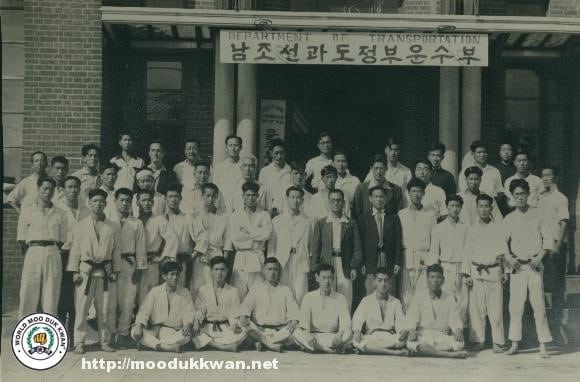
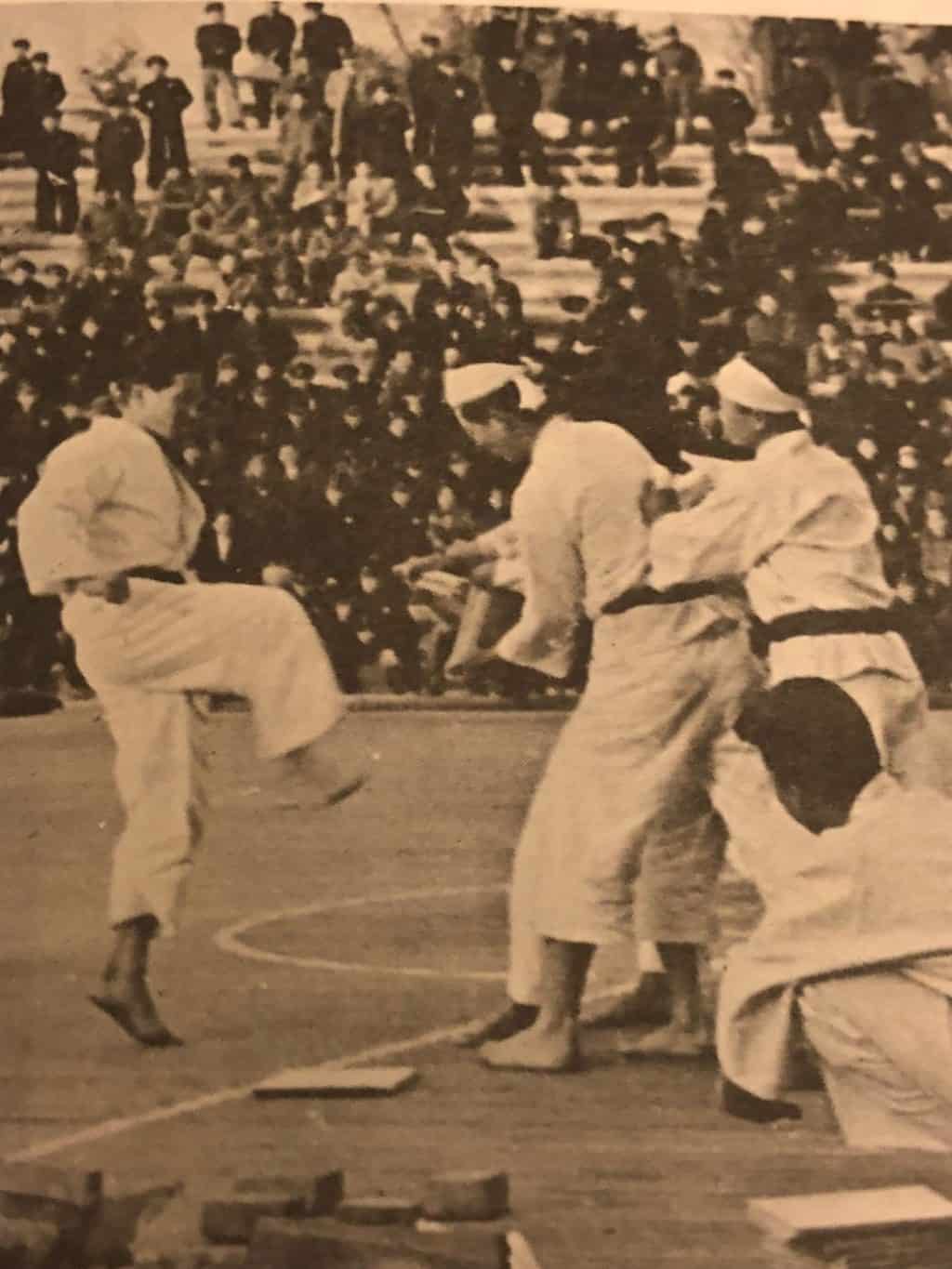
Early MDK started colored (while, Green, Red, and Blue) Trimmed Do Bohk from 1954 based on honoring the Korean Martial art history and tradition as well as the Founder’s philosophy.
- Green and Red belts were trimmed on front lapel and belt. Dan was trimmed on front lapel, lower lapel, and sleeves as well as belt.
Below early Gup or Dan Shim Sa in Korea.
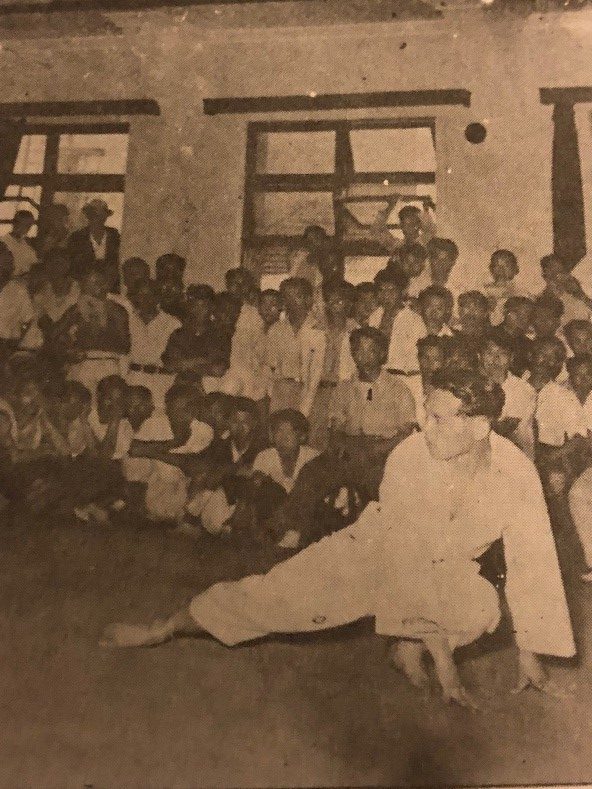
The photos below, also from the Soo Bahk Do Dae Kham, on the left, shows the Founder kicking, and on the far right, shows the present Kwan Jang Nim posing in a normal standing stance.
These two photos taken from the Founder’s Book, Soo Bahk Dae Kham, illustrate the original design of the Moo Duk Kwan® trim on the uniforms and includes the design for belts.
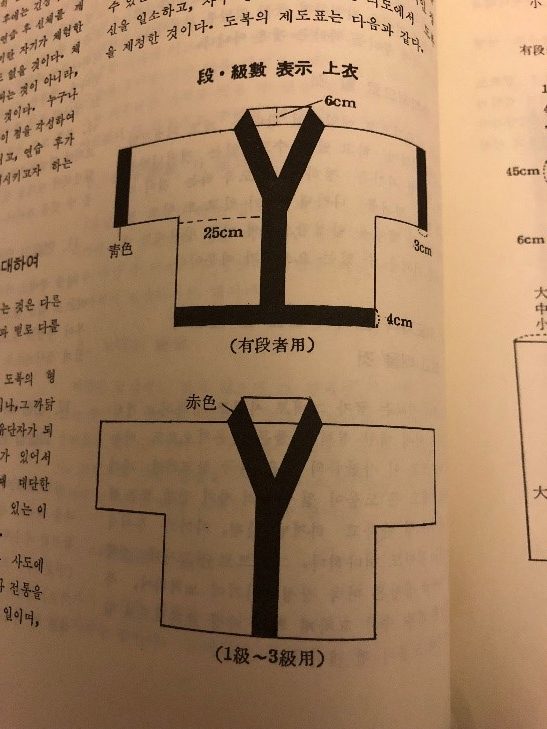
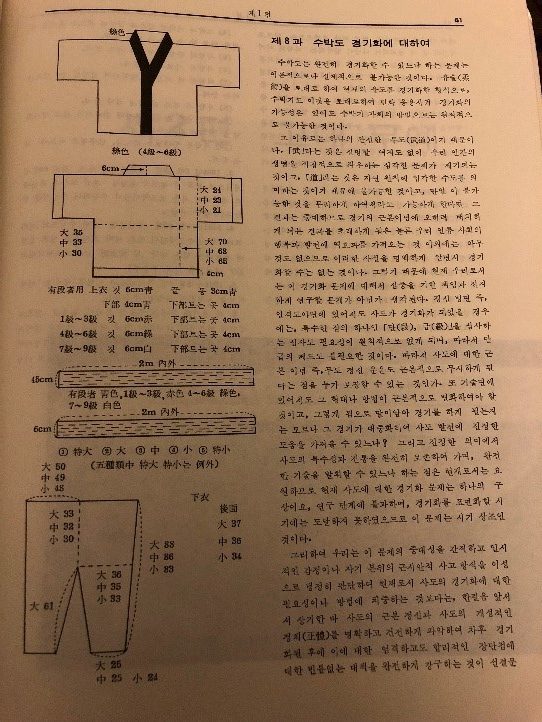
The two illustrations are also from the Soo Bahk Do Dae Kham, showing an ancient mural, showing the rider wearing the trim on his uniform. The other illustration shows an ancient warrior archer also wearing the trim on his uniform.
This photo depicts the colored belt system and the progression in rank from white belt to the Ko Dan Ja (senior member) rank at the Master’s level.
The founder’s motivation was to Moo Duk Kwan® practitioners connect with Korean tradition by wearing Trimmed outfits that was wore by Korean men in general for working, work out, and/or Martial art trainings during the Ko Ku Ryo Dynasty (B.C. 37 – 668 A.D.)
Trimmed uniform was only worn by the Moo Duk Kwan® practitioners during the time periods of 1950s, 60s, and 70s. Trimmed Moo Duk Kwan® Do Bohk provides as visible identity as well as a pride for the Moo Duk Kwan® practitioners at that time. When anyone who practice an art wearing trimmed Do Bohk, they were Moo Duk Kwan® practitioners.
- Even TKD practitioners who has a heritage to the MDK worn Trimmed Do Bohk until 1977 when the Korean TKD Federation had eliminated all Kwan’s name for their political reasons.
- The Korean TKD Association was formed 1965 backing by the Military government in Korea. Accordingly, Moo Duk Kwan® members started to lose places to maintain their identity due to political pressures by the Korea Military government.
- The Black belt magazine became seen in Korea through US military personnel in 1960s. Moo Duk Kwan® members in Korea were very happy to see for foreign practitioners who are wearing trimmed Moo Duk Kwan® Do Bohk in the BB magazine and being recognized. It was a special moment to bring a strong connection between our pride in the past and our hope for the future.
- Not only were members of the Moo Duk Kwan® graced the cover of Black Belt magazine, but also Inside Kung Fu, which featured the Founder of the Moo Duk Kwan®, Hwang Kee on the cover and as a main article in the magazine.
- Other magazines such as Tae Kwon Times, Karate Illustrated, and others also featured Moo Duk Kwan® members on their covers and in featured articles.
- The Trimmed Moo Duk Kwan® Do Bohk was a Powerful Physical Picture (Symbol) for students of the Founder and their connections.
SOME THOUGHTS ABOUT THE MOO DUK KWAN® DO BOK
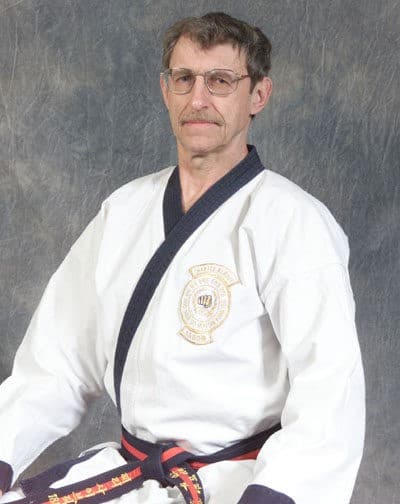
- When I was asked to comment on the unique trim on the Moo Duk Kwan® do bok, I thought back to my early days (age 17 to 24), when I wore several types of martial arts uniforms, many varieties of military uniforms, and an assortment of athletic uniforms playing three sports in college. My first reaction was that I didn’t think about them, I just put them on and did my thing. But after some reflection I recalled some impressions that I had a long time ago.
- We know that the trimmed do bok of the Moo Duk Kwan® has had an interesting and meaningful history. During the 40 years that Korea was a victim of the brutal occupation of the Japanese, they were only permitted exposure to all things Japanese, including culture and martial arts. After the defeat of Japan, and the end of the Korean War, the trim of the Moo Duk Kwan® do boks established a unique tie to Korean history and culture, which they needed and embraced during those years.
- My introduction to martial arts was in the US Army in 1958; Judo and Ju Jitsu in Military Police School. After graduation I continued training in a street school in Killeen Texas, and my uniform was white on white. This was my image of martial arts uniforms. Actually, it was the first I had ever seen.
- Six months later when I arrived in Korea, my CO told me I would be starting Korean Karate immediately because I would be a body guard for General Decker, the Commander of UN Forces Far East. Both of those orders surprised me.
- The first night I walked into the Tang Soo Do Moo Duk Kwan® class and saw the members in their do boks, I remember thinking, “This must be the Korean version of a martial arts uniform”. Later, when I trained with several of the Korean Dictator’s body guards who were members of other Kwans, I realized that my do bok style was unique to the Moo Duk Kwan®. The trim and colors became very special for me, and I’ve worn that style of do bok for the past 60 years.
- When I established the Minnesota Tang Soo Do Assn. in 1962, we were only the fourth martial arts school in a metro area of two million. The first tournament in our area had competitors from six states and Canada, and I was surprised to see that all the uniforms were white with limited variations of belt colors. We of course, were the only competitors wearing the trim. I also remember, that because of our dominance in sparring (due to our defense and jumping and spinning techniques), competitors wearing the Moo Duk Kwan® do bok, were not invited to participate in local open tournaments for six years.
- The meaning and purpose of the Gup belt colors is also interesting and important. We know the philosophy behind the choice of the colors, white, green, red and blue. Obviously, they inform the Instructor as to the relative level of each student. This is particularly convenient for visiting Instructors or those with many schools, and it creates a visual order.
- But the orange belt. After we established the United States Tang Soo Do Moo Duk Kwan Federation®, later renamed the United States Soo Bahk Do Moo Duk Kwan Federation®, we were aware that many martial arts in the US provided an “incentive belt”, a colored belt that replaced the final two of the four white belts. We asked the Founder if this would be appropriate for the Moo Duk Kwan®, and after significant thought on the subject he supported it. We chose orange because it was unique in the US at the time. The Founder agreed, and so it became the colored belt for the 8th and 7th Gup ranks.
- I think it’s important that at this time, all of the Moo Duk Kwan® members, past and present, understand the derivation and meaning of their do bok. When they put it on, it represents the uniqueness of an outstanding martial arts organization, the Moo Duk Kwan®. Our profound thanks to the Founder for creating, and Kwan Jang Nim H.C. Hwang for perpetuating, this unique symbol of our moo do heritage.
Lawrence Seiberlich
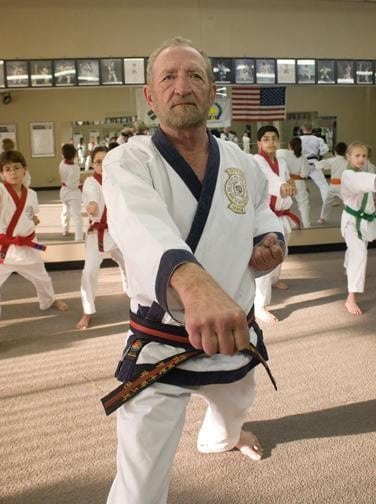
Sa Bom Nim Hanke relates:
In 1962 there was an article published in Black Belt Magazine with a picture of a competitor wearing a Moo Duk Kwan® midnight blue trimmed uniform (Russell Hanke) which was the first time many Koreans saw the uniform in the magazine and they were excited and proud to see it in the publication.
In 1964 Sa Bom Nim Russ Hanke attended a Tae Kwon Do tournament on the East coast with one of his Dan Students. It happened that Sa Bom Nim Chuck Norris was present and came up to Sa Bom Nim Hanke and asked him if he was part of the Moo Duk Kwan® because he and the Dan student were the only ones there wearing the blue trimmed uniform. This event made Sa Bom Nim Hanke and his student very proud as that now showed that connection with Sa Bom Nim Chuck Norris.
Sa Bom Nim Hanke’s 1st Tournament in Toronto, Canada. Sa Bom Nim Hanke was a 1st Dan at the time and placed 3rd in sparring.
Sa Bom Nim Hanke relates how he came to find Soo Bahk Do Moo Duk Kwan®, then called “Tang Soo Do” Moo Duk Kwan®.
“I went to a local YMCA to learn judo, and this class was taught in the basement. The judo instructor’s name was Jim Whomsley, he was about my size, a little heftier, and he was called a 2nd Dan, 2nd degree black belt, which I had not known what a black belt was, much less a 2nd Dan. I was observing his class and in this particular class, at the time I got there, he was working with a brand-new beginner. This guy had lesson “zero”. He was a white belt and about 6 foot, a little bit less, and weighed about 300 pounds. He was as wide and round and he was tall and had an “attitude”. Mr. Jim Whomsley, the judo expert, he was really doing everything in his power to throw the big guy down, and he couldn’t do it, he could not move him. It broke my heart As I said, the room was downstairs, so I went upstairs to leave, I heard a bunch of yelling, being very curious, I looked up and I wondered what was going on in that room, and it said Tang Soo Do, and I didn’t know what Tang Soo Do was either. So being a curious guy, I walked down, and it was in a room like this that they were training in, and I see my instructor who is smaller than me and skinner then me, his name was Mr. Dale Drulliard. Mr. Dale Drulliard was the first non-Korean ever to be promoted to black belt in the Moo Duk Kwan®. He studied in Korea under Kwan Jang Nim, and he is the very first non-Asian to ever be promoted. So, I just walked in again, I don’t believe in coincidences, they happened to be free-sparring and he was on the floor and he was fighting two guys at one time. I did not know what Tang Soo Do was I don’t know what anything was at the time, but this is what I’m going to do, and that is how I got started, and I’ve never looked back. The Do Bohk was exactly the way we wear it today, the midnight blue, our Moo Duk Kwan® tradition. “
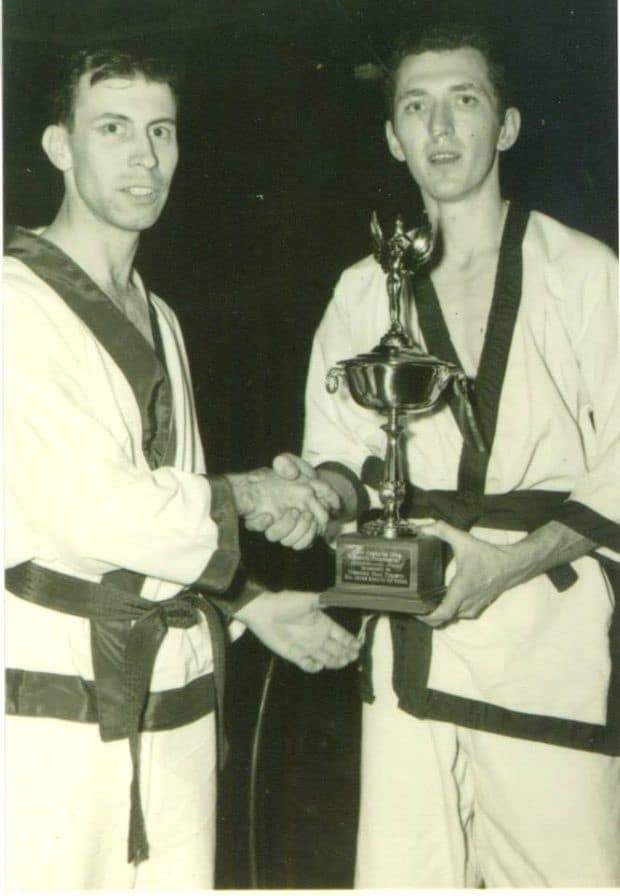
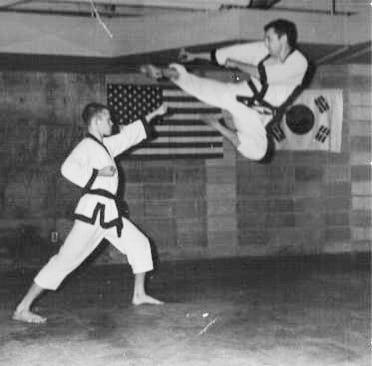
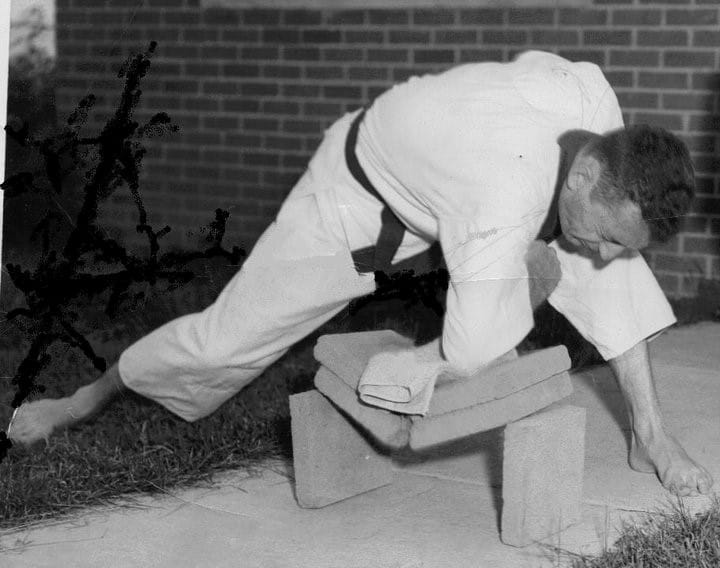
Russ Hanke
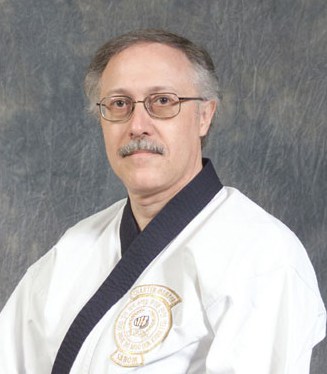
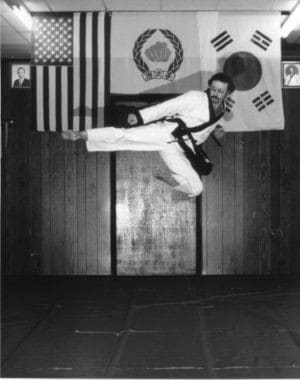
My initial experience in the Moo Duk Kwan® came while being stationed at Osan AB, South Korea. I had arrived in 1970 and one of my co-workers (William Gorno, Dan Bon 14364) convinced me to join the MDK, after I expressed an interest in learning martial arts. Little did I realize that the Do Jahng was over ½ mile away (on the other side of the base, near the main gate). That being said, I saw the spirit and character of the members and I was hooked after a few lessons. I really didn’t understand the philosophy of the belt colors, or of the uniform trimming, only that each color represented a higher level of learning and ability. I loved that and the want and desire for it increased with each class, whether it came from the head Sa Bom Nim (C.S. Kim) or senior member (John Della Pia, Dan Bon 14363) during the noon day class (12-3pm).
Frank Bonsignore
Frank Bonsignore

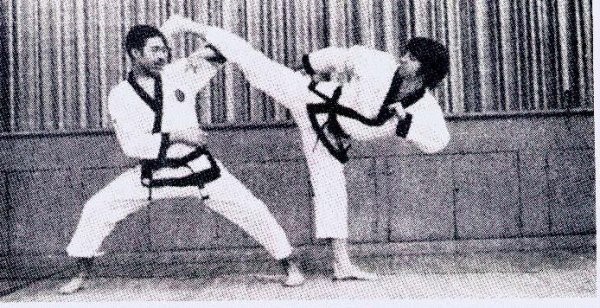
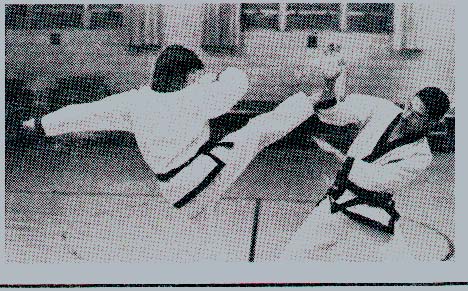
Mr. Roberto Bonefont, Sr., dan bon 13927 remembers his connection to the unique Blue trim and colored Gup trim. “My instructor, Michael Mosley, dan bon 10180 and his instructor Robert Sohn, dan bon 6037, shared stories of the Founder, including explaining the use of the trim on the uniforms, and it usually ended with “it makes our style and art unique” because of the history behind the trim on the dan and gup Uniforms. I started training in 1967 and my first impression of the uniforms was during a high school martial arts day at my high school in Brooklyn, New York. In the demonstration, there were gup members wearing Green and Red trim on their uniforms and my instructor had the dan trim on his uniform. Back then the trim was black because we didn’t have a blue trim material sample.” Since it was a martial arts day, we had demos from Judo, aikido, kung Fu, and Japanese karate. The only uniform that was different from the rest were the Moo Duk Kwan® uniforms, without any explanation, it was easy to understand the ranking because of the colored trims and their place in the disciplined line up. My instructor’s demonstration lasted the longest and include the Kyo Pa demo, which was much better than the Japanese karate because of the jumping kicks they did during the Kyo Pa demo. I was amazed at the precision of the kicking and punching exercises they did and of course the color trims on the uniforms. They stood out in performance and appearance. I joined his class that same week.
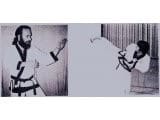
During a specific tournament held in Silver Springs, Maryland (All American Karate Championships, sponsored by the Late Master Ki Whang Kim), where we got to meet many of the influential Karate champions of the late 60s and early 70s. Master Kim was kind enough to allow us to train with him and his student, Mitchell Bobrow, at the dojang in Silver Springs, at that time his dan members wore the Moo Duk Kwan® trim. During the eliminations of the tournament, much discussion concerning the fairness of judging was delaying the eliminations. Many of the Japanese or other stylists were concerned that most of the referees were from the Korean arts and would score unfairly whenever a black belt with the Moo Duk Kwan® trim entered a ring to compete. Moo Duk Kwan® members had a reputation of being highly skilled with their kicking techniques, especially jump kicks. So Master Kim, in an effort to be fair to all, mandated that all practitioners turned the do bok tops inside out, so you could not see the Moo Duk Kwan® trim or any patch affiliation to a particular style. After a few hours of delay, the eliminations continued.


Roberto Bonefont, Sr.
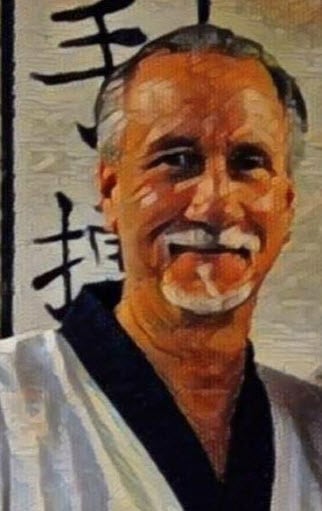

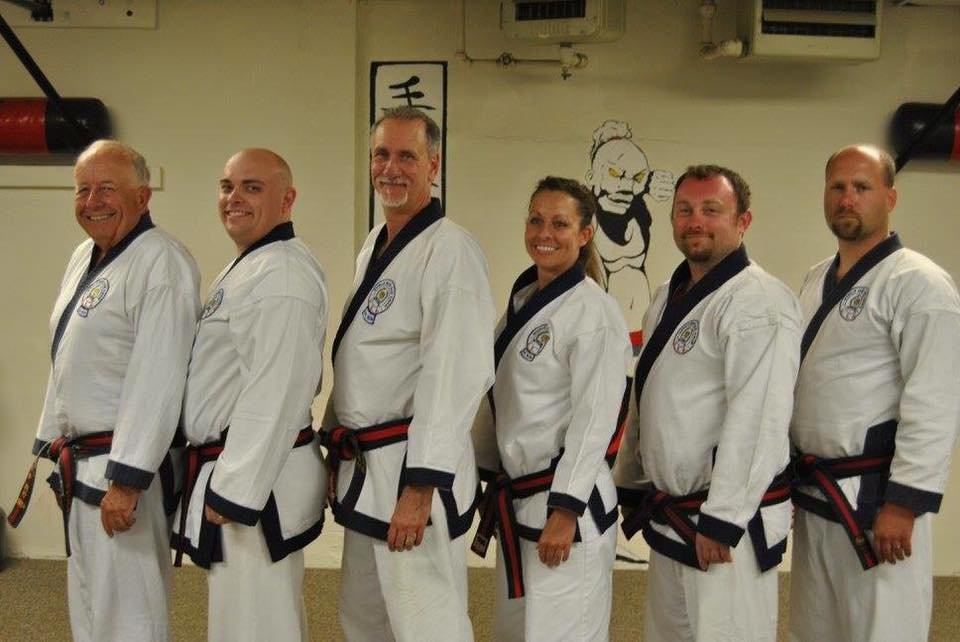
My first exposure to the Moo Duk Kwan® Do bahk was when I saw someone on the cover of Karate Illustrated around 1974 performing a double jump front kick. I thought that the uniform was so unique, unlike the plain white and black one I was in the 70’s. I had been training in Goju Shori Ryu which wore an all-black uniform. As I began to research the martial arts, I came across the art of Tang Soo Do. One day I happen to hear about a “karate” class at the local Y.M.C.A. So, I went to see what the class was about, and found out it was Tang Soo Do Moo Duk Kwan®. There was the instructor, then Kyo-Sa Paul Barton in the uniform I saw in the magazine. My first thought was this was not Karate, but the Korean style. Later I was the first and only one to make it to Dan level, and he presented me with the Midnight Blue Do Bahk. I can still remember him having me go right away and change into it. The feeling of great pride came over me, but also the uniform made me feel a great energy and pride, that I was now part of that tradition and heritage of the Korean arts. I still present my students with their first Do bahk and relate that story to them, to carry on the tradition.
Steven Lemner
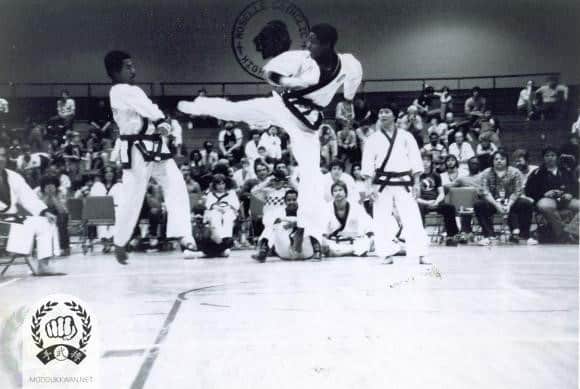
USA tournament circuit during early 1960’s. While most of competitors worn white Do Bohk (Japanese schools were dominated in numbers at that time). Some referees had never seen colorful trimmed Do Bohk (in green, red, and blue) before. Their reaction of first seeing the Trimmed Do Bohk, they were considered not qualified for the MDK practitioner to compete…. After all, many Moo Duk Kwan® competitors who wore Trimmed Do bohk were recognized as highly skilled practitioners and we can see from our history.
More than a half of century passed, it is meaningful to re-visit, to look back to the original Founder’s intent in 1954 and we recognize the value that inspires us to be a better Moo Do practitioner.
Honoring the past, is an important Moo Do Value, as part of our history and tradition, it also supports our Moo Do Philosophy as the Founder intended. Rigorous training, maintaining high technical standards are small parts of the foundational aspects of the Moo Duk Kwan® school since its inception in 1945. These values have continued to support our efforts to become a “better human being.”
The Late Great Kwan Jang Nim and Founder, Hwang Kee wrote in his Moo Do Chul Hahk… “My basic intentions in publishing this book on Moo Do Philosophy are to develop awareness in the present generation of Moo Do practitioners and to facilitate their development as authentic practitioners.” (Moo Do Chul Hahk, A New Translation, copyright 2009, Hyun Chul Hwang, page 81)
Today, most practitioners who are wearing trimmed Do Bohk in Tang Soo Do or Tae Kwon Do worldwide are connected to the Founder’s Moo Duk Kwan® heritage.
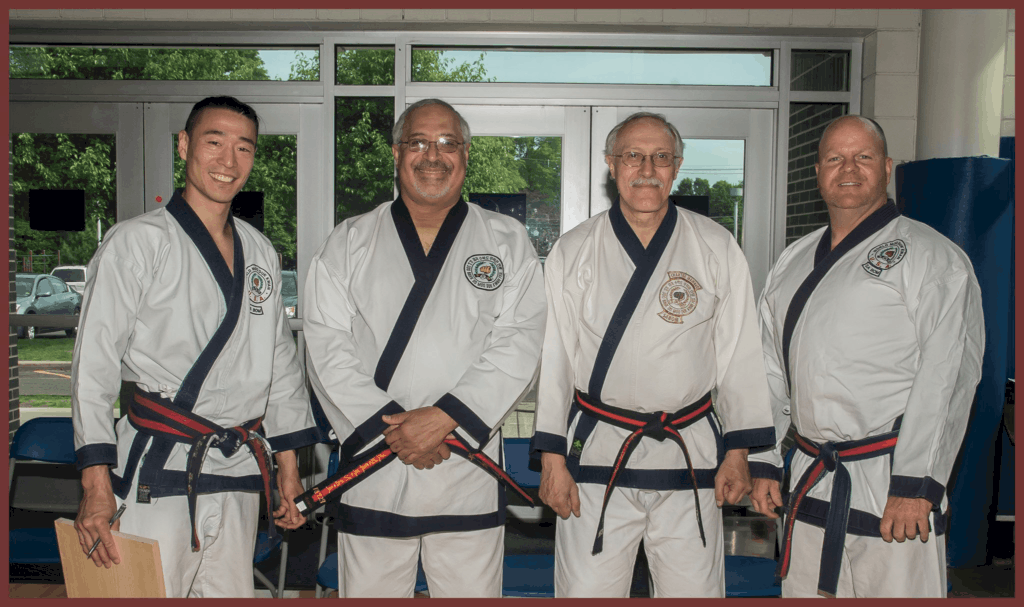
Above, the Founder of the Moo Duk Kwan® Hwang Kee and Kwan Jang Nim H.C. Hwang
The historical connection of our unique trim in the Moo Duk Kwan® do bok has influenced many other tang soo do, tae kwon do and other arts; and they all singularly, can be traced back to the Founder of the Moo Duk Kwan®, the late Great Grandmaster Hwang Kee. His Moo Do philosophy has connected us to traditional Korean martial arts history. The photo above was taken during the 70th Birthday of H.C. Hwang, Kwan Jang Nim, at the U.S. central dojang in Springfield NJ, recreating a photo (below) from the original Soo Bahk Do Dae Kham in Seoul, South Korea.
Acknowledgements:
In speaking with Kwan Jang Nim, he wanted to share his thoughts about the meaningful connection to the Founder’s vision and the Moo Duk Kwan® School:
‘These are some of my thoughts:
- Connect to Moo Do values by wearing History and Tradition in our training – Founder’s intent.
- Once in my conversation with Master Bob Alegria who was a student of Master Norris and his sparring team during 1960’s. He shared a story that when they entered the tournament with trim uniforms, Japanese referees would not recognize the trim uniform (because they never seen them) and they were confused whether they should permit them to compete or not.
- Once in a history, trimmed Moo Duk Kwan®Do Bok weren’t many in Martial Arts community but it was a strong sign for the Moo Duk Kwan® connection.
- It is our hope to understand a history and the Founder’s Hwang Kee’s Vision to be connected with all Moo Duk Kwan® trimmed Do Bok wearing practitioners.’
Many thanks to these dedicated members of the World Moo Duk Kwan®, that helped contribute information concerning the history of the do bok of the Moo Duk Kwan® school to include their personal reflections, and personal photos.
Kamsahamnida!
- H.C. Hwang, Kwan Jang Nim, World Moo Duk Kwan® organization
- Lawrence Seiberlich, Sa bom Nim
- Russ Hanke, Sa Bom Nim
- Frank Bonsignore, Sa Bom Nim
- Steven Lemner, Sa Bom Nim
- Master Roberto Bonefont, Sr.

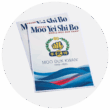
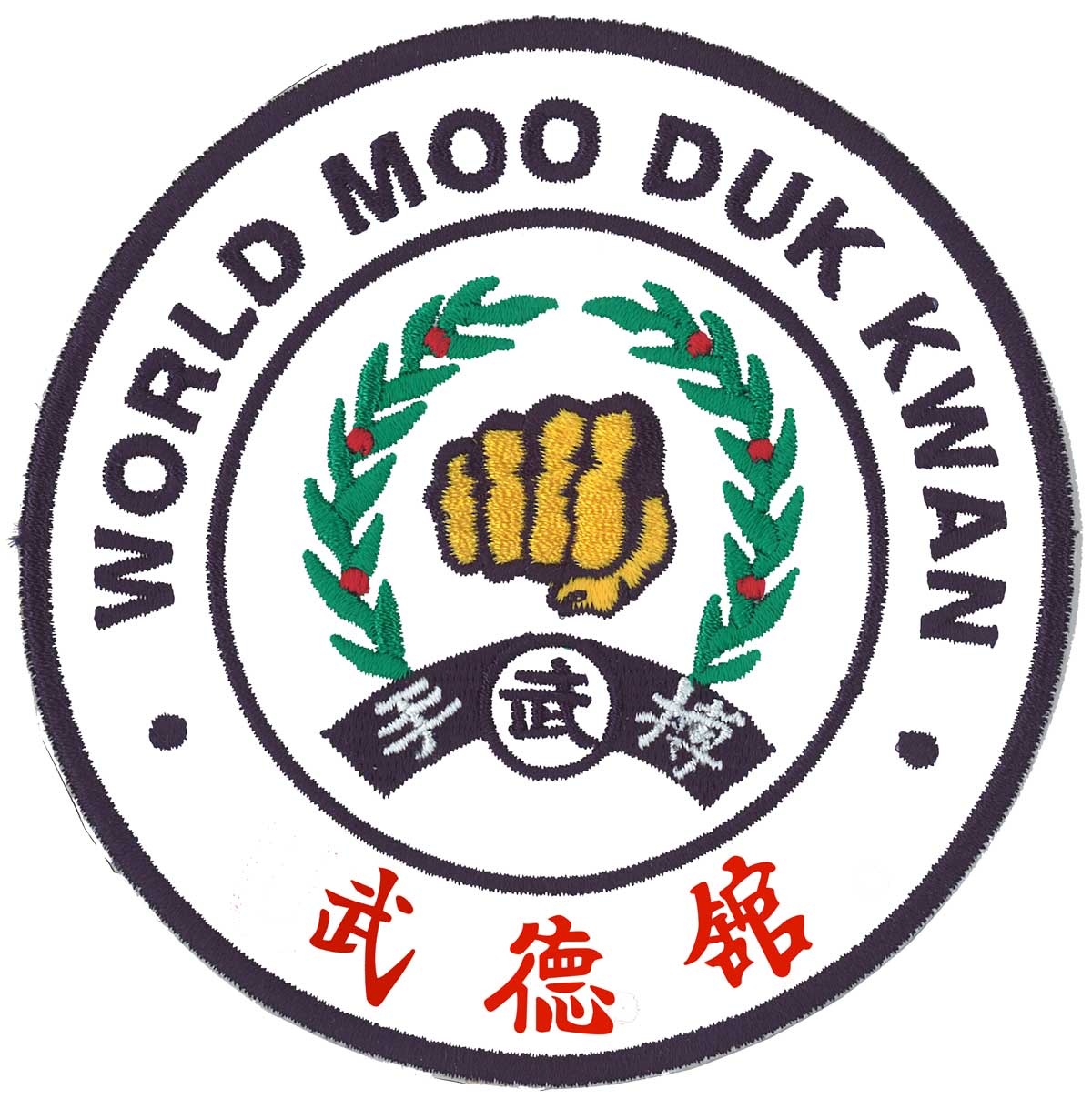
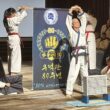
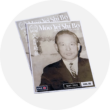
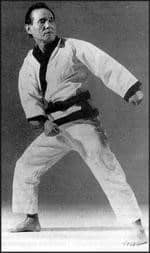
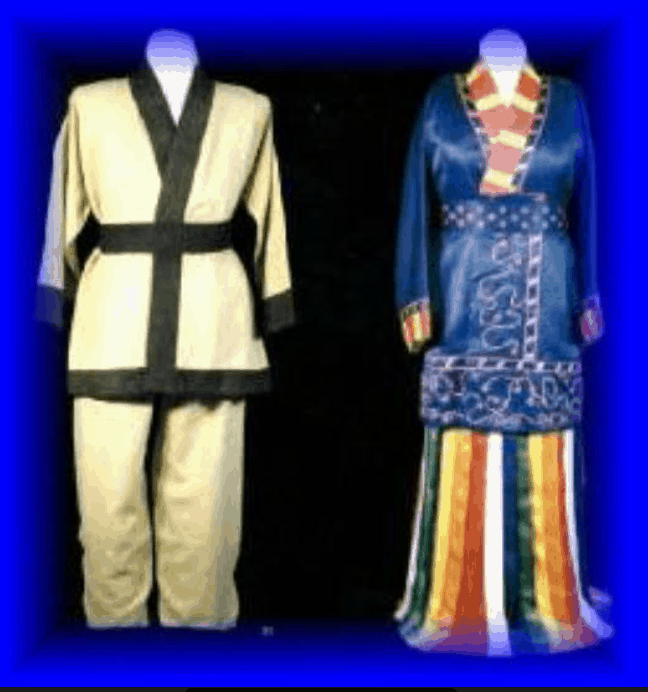


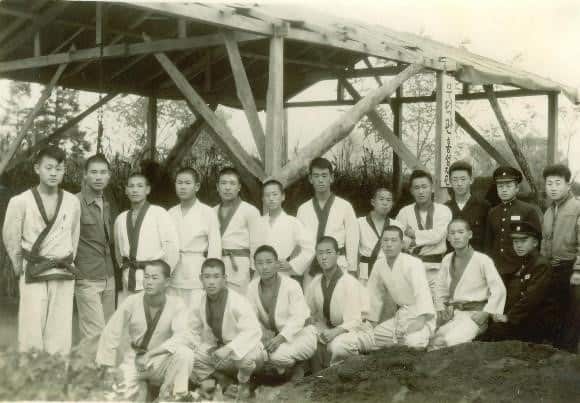
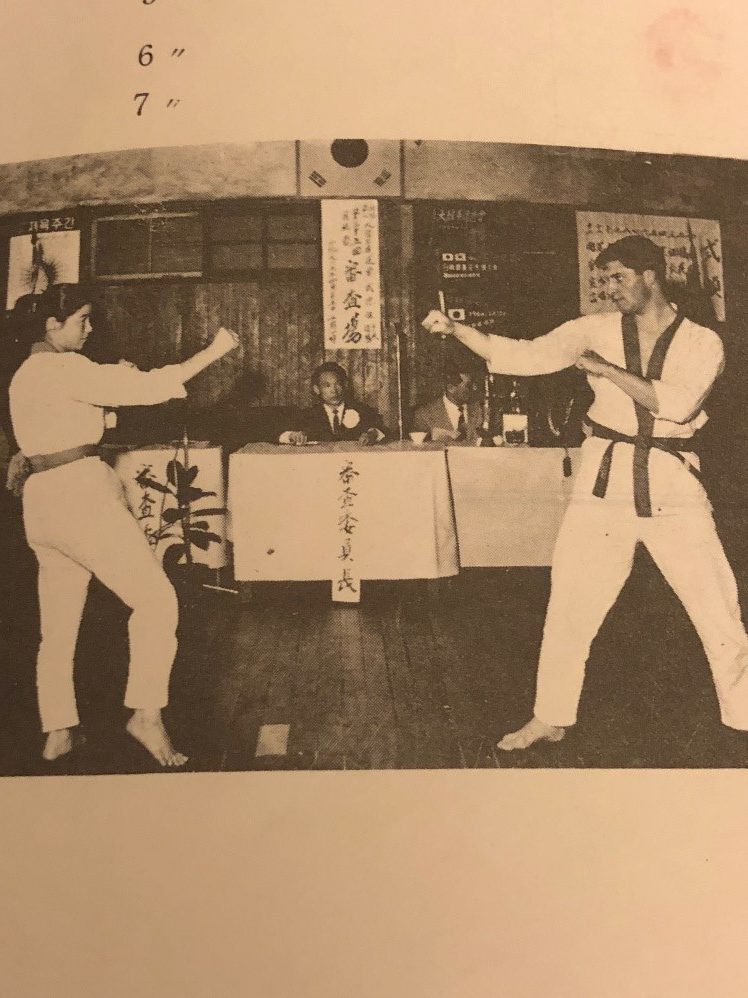

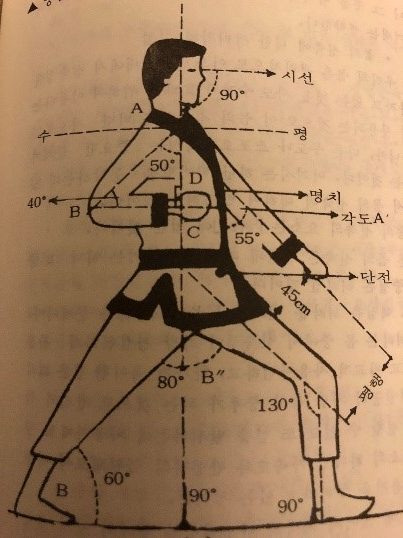

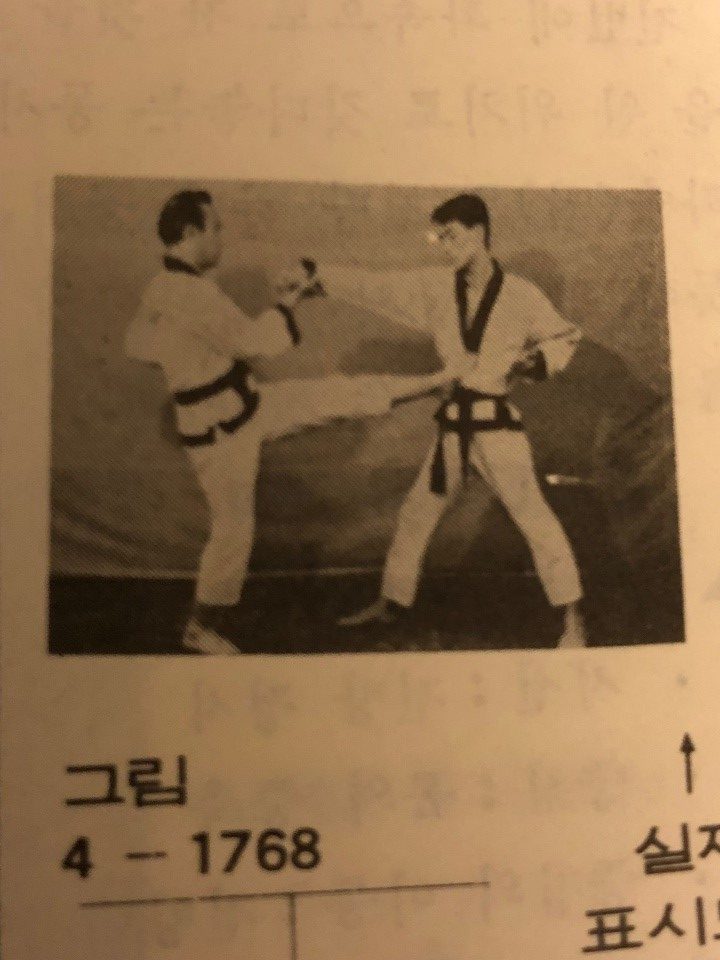
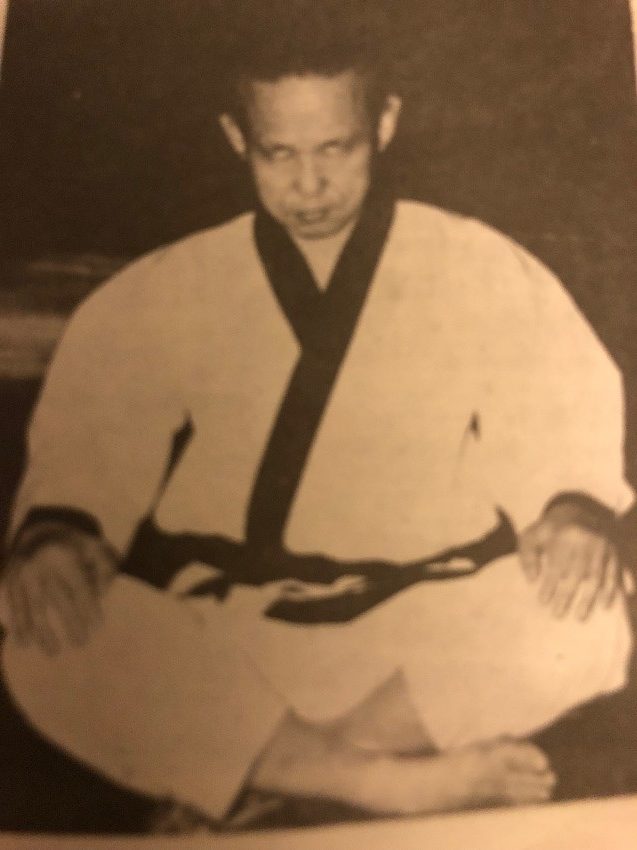

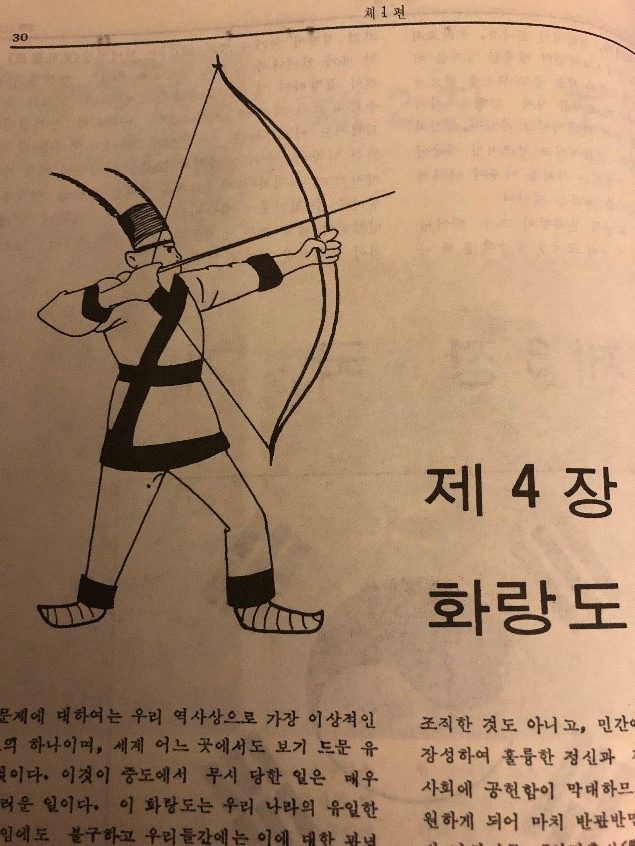
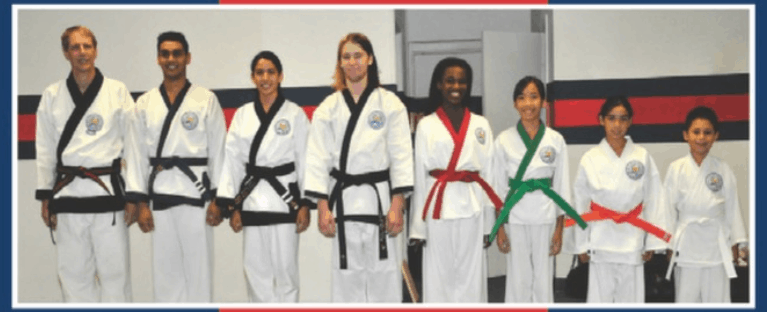
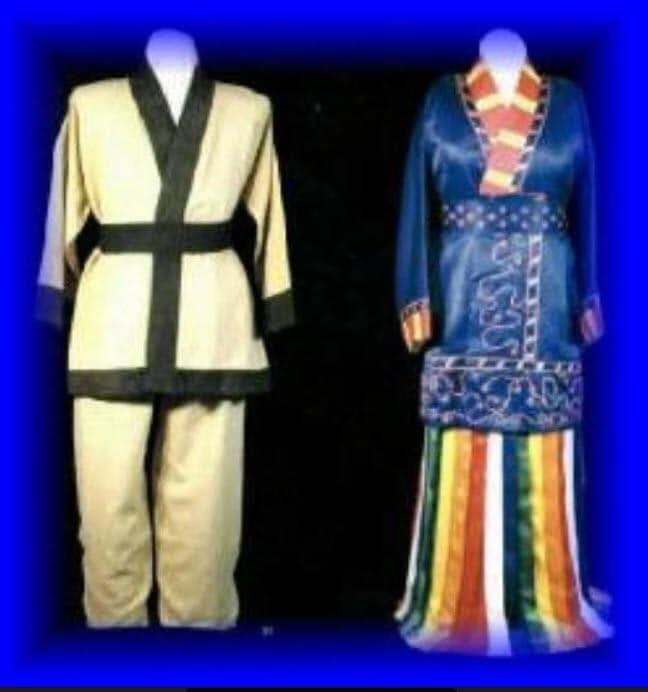
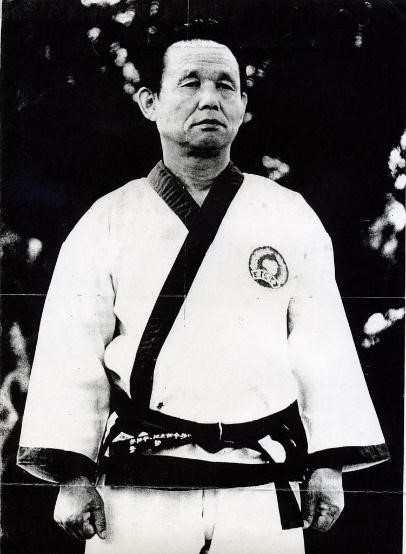
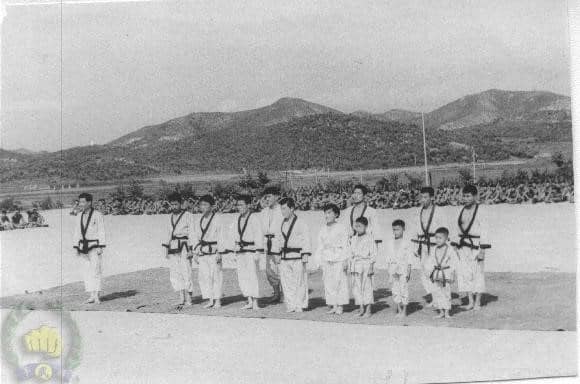
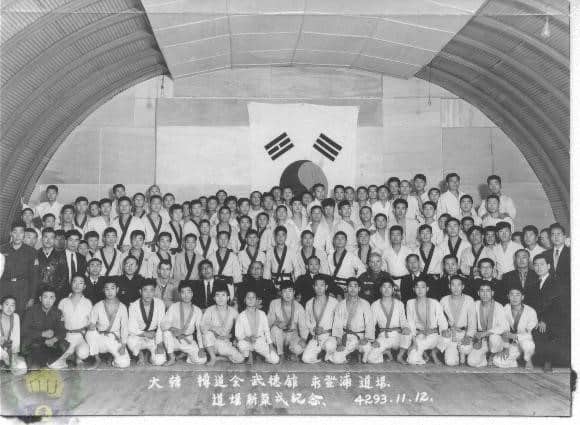
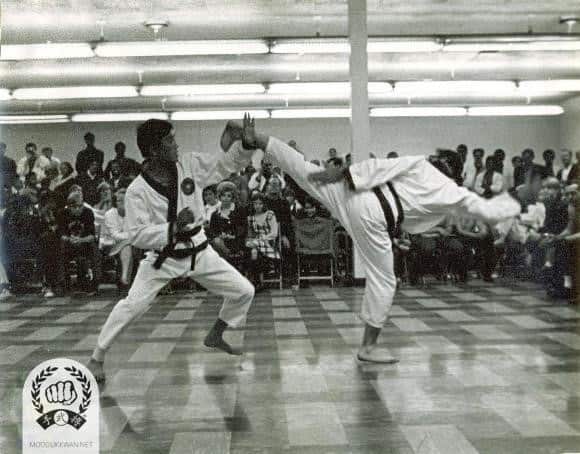
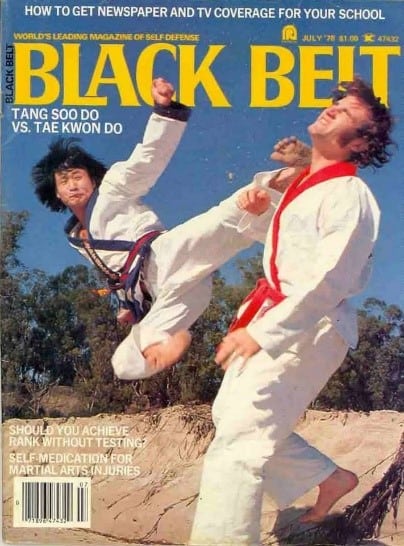
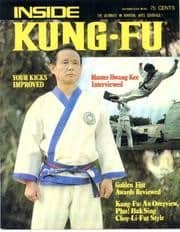
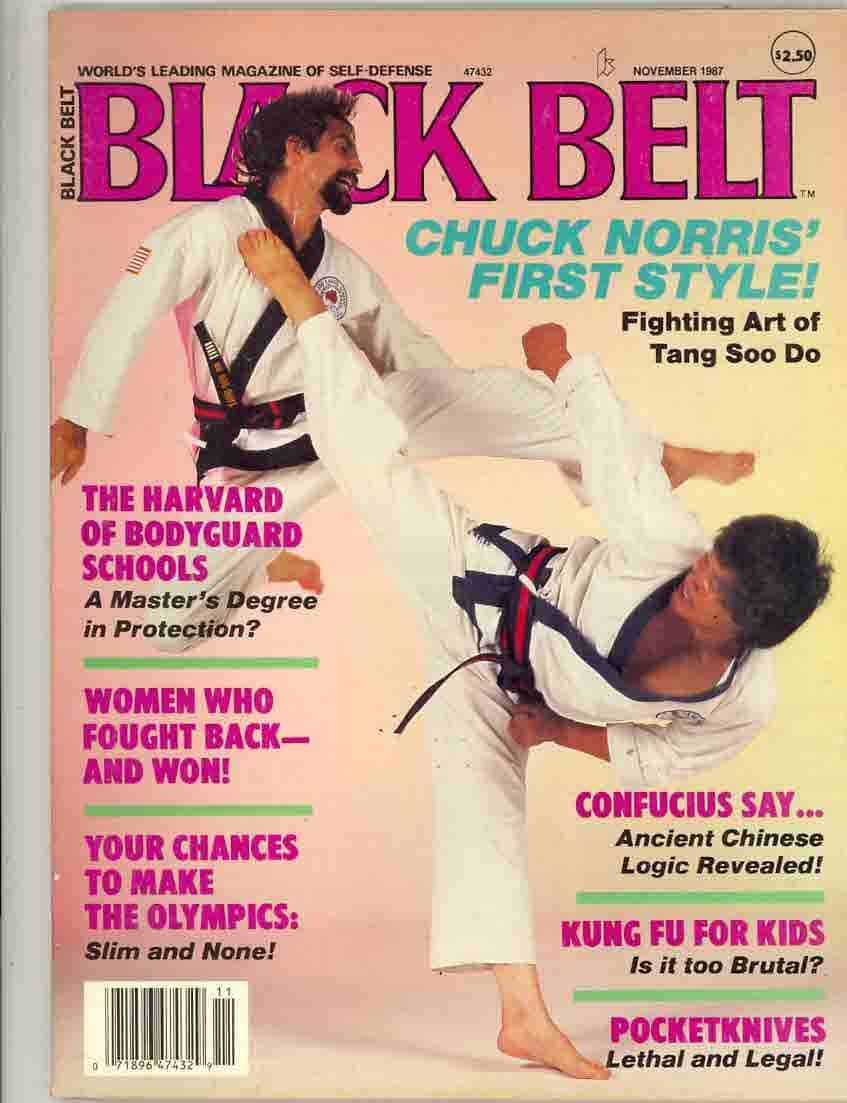

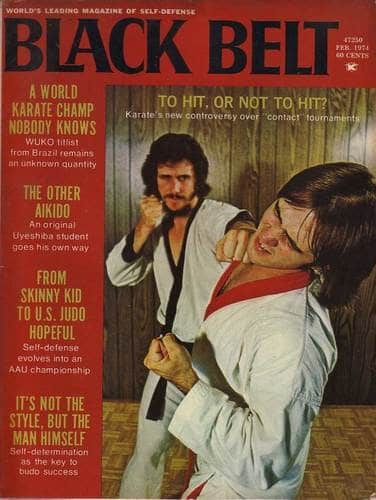


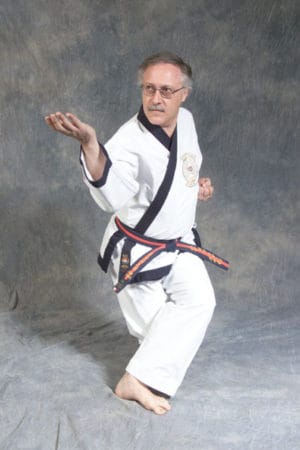
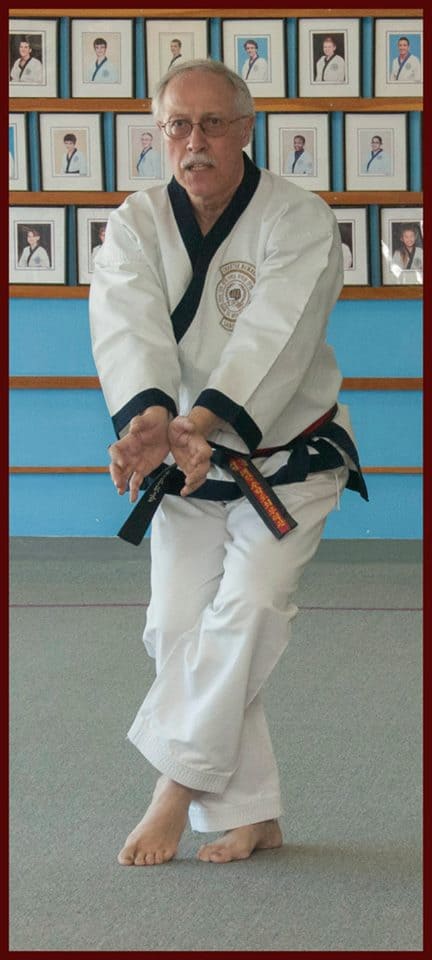
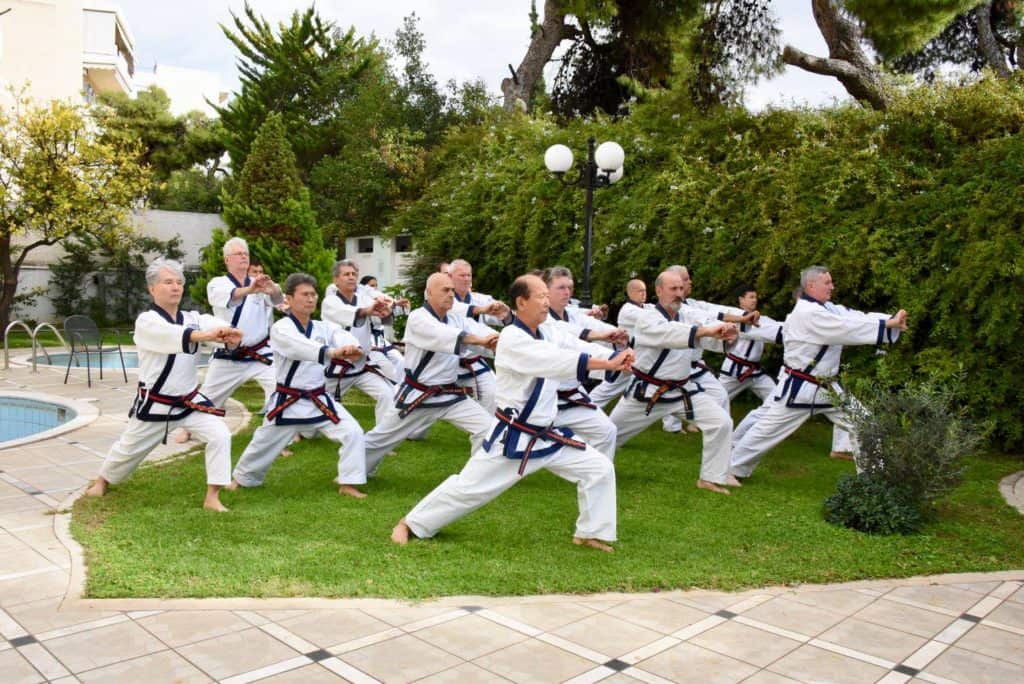
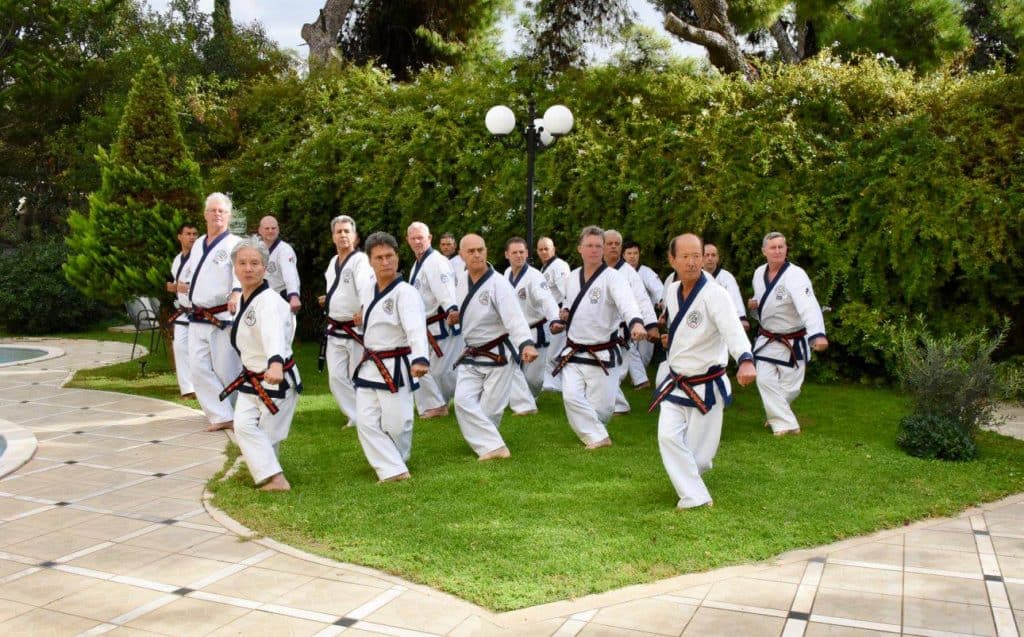
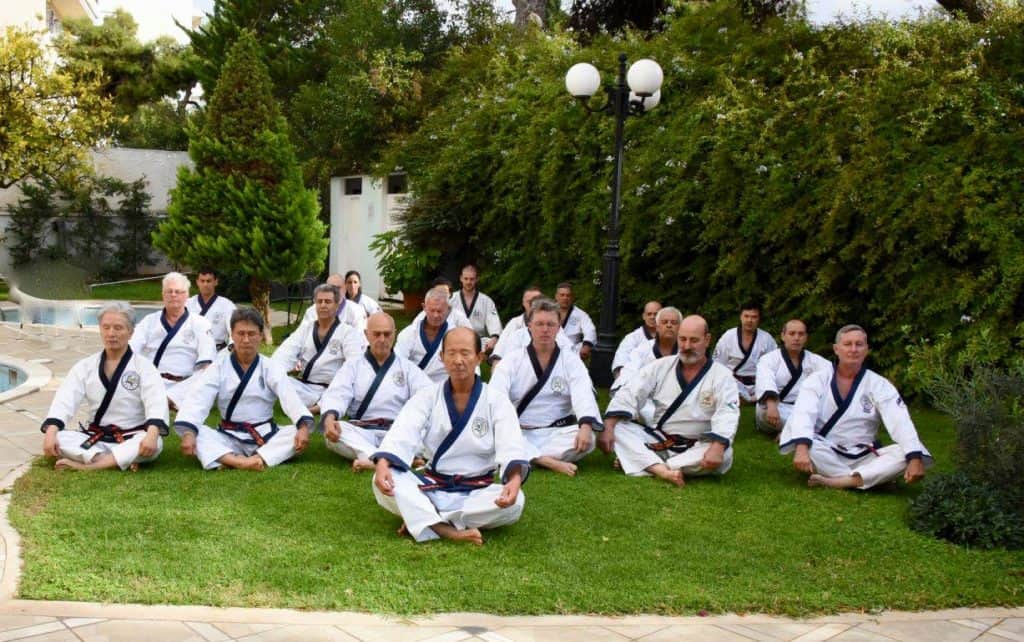
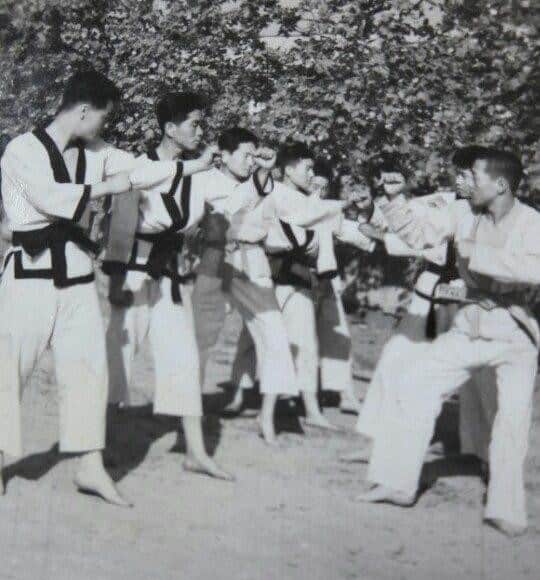
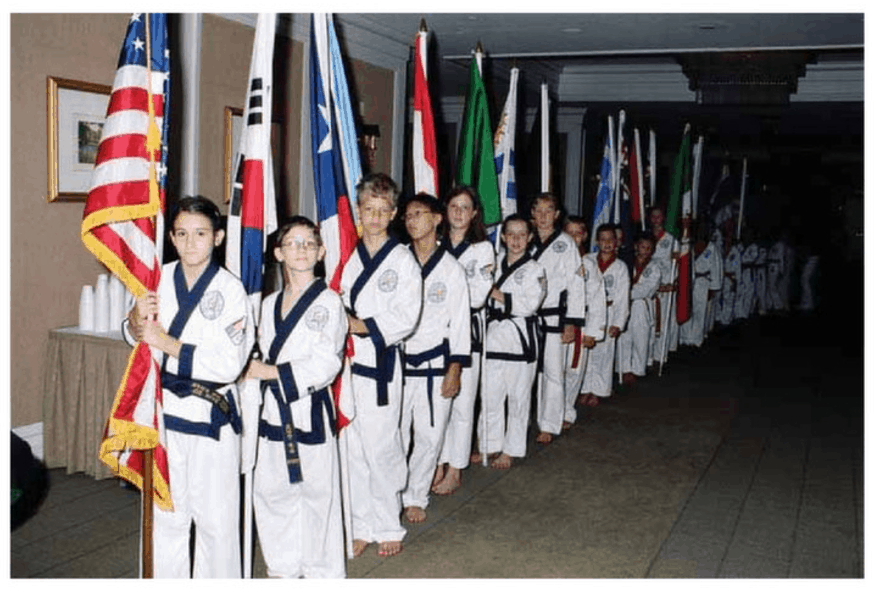
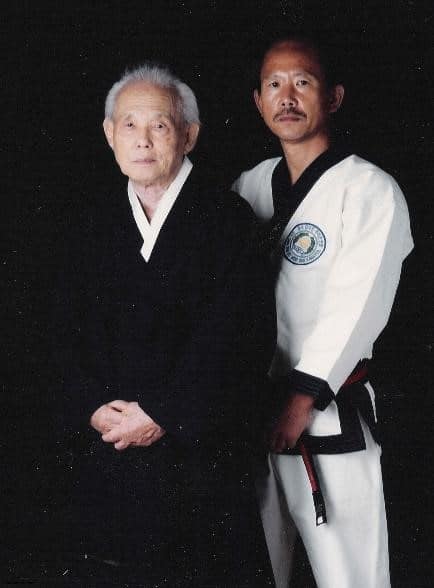
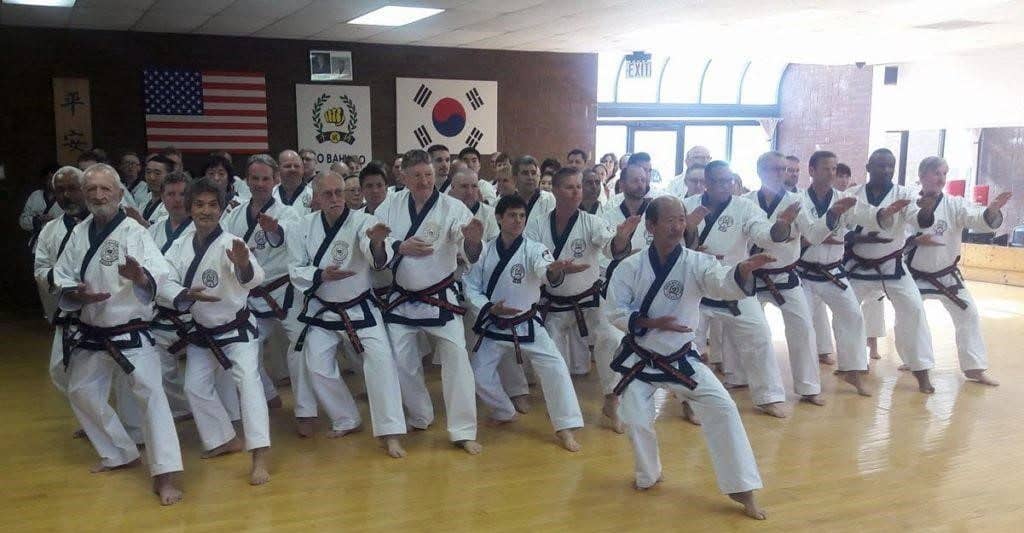
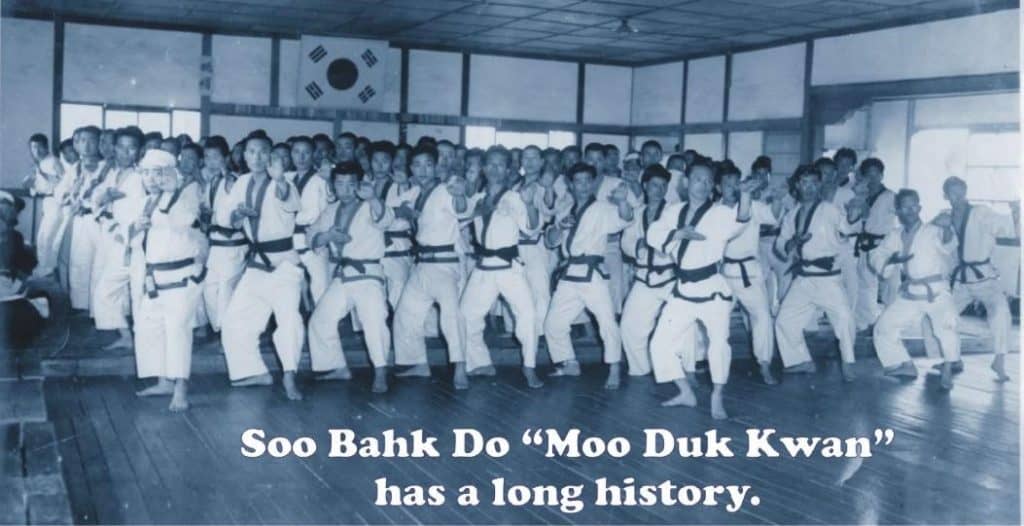
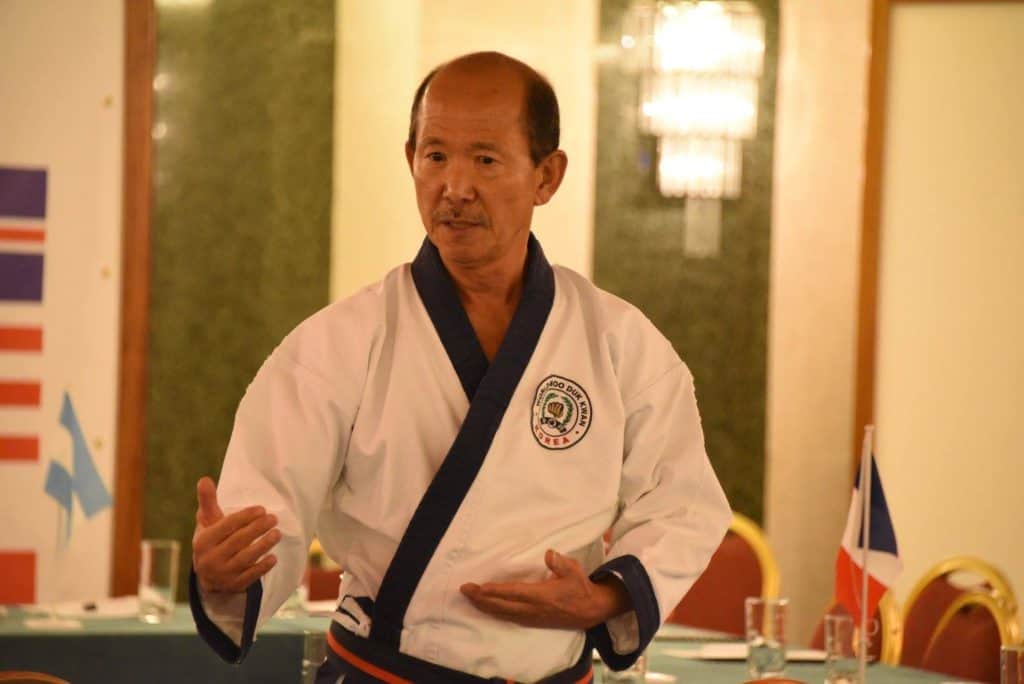
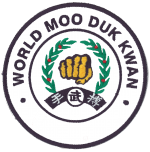

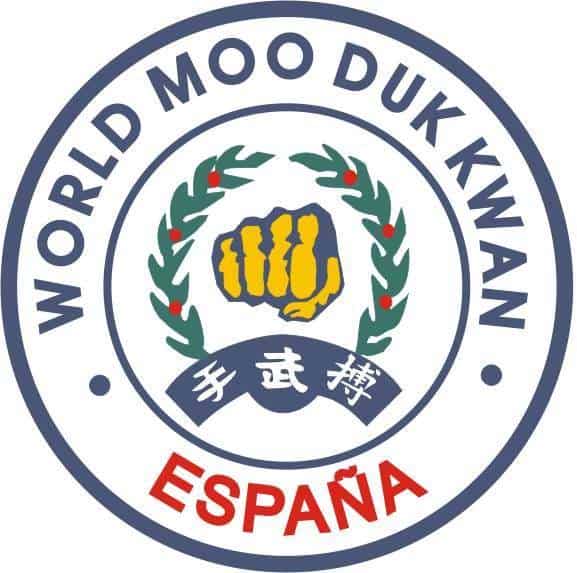
Very nice article Master Bonefont! Thanks!